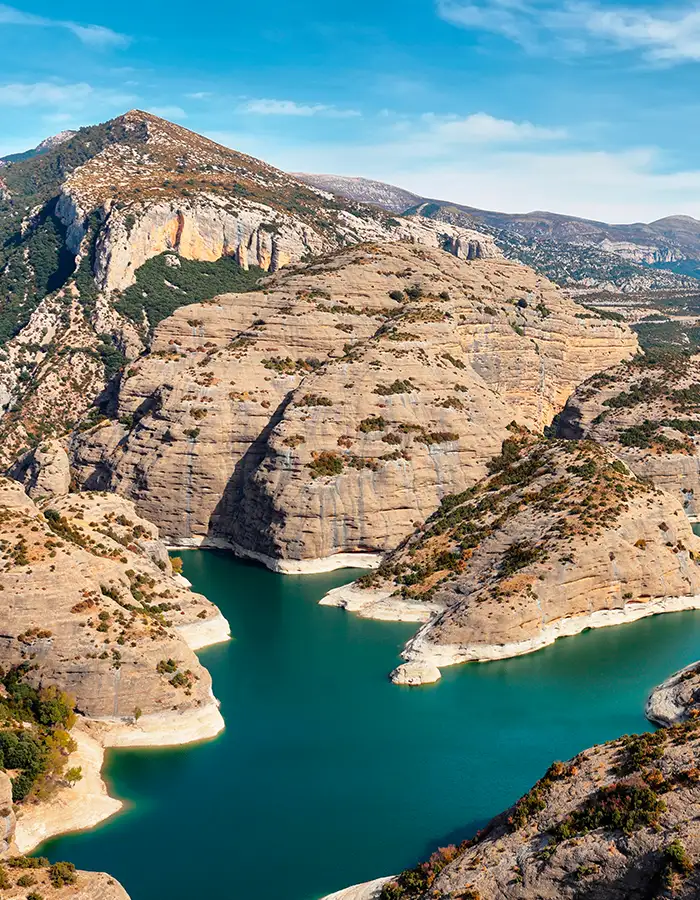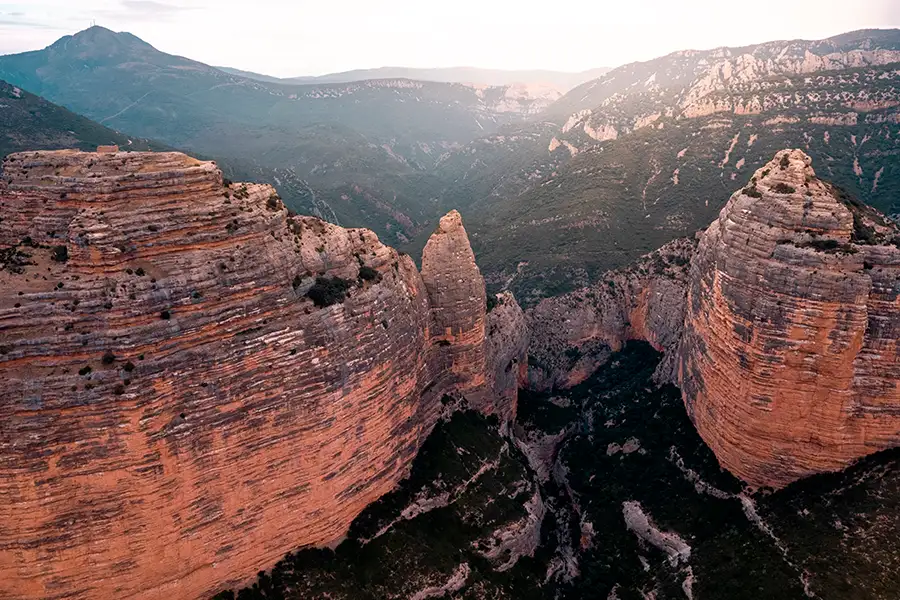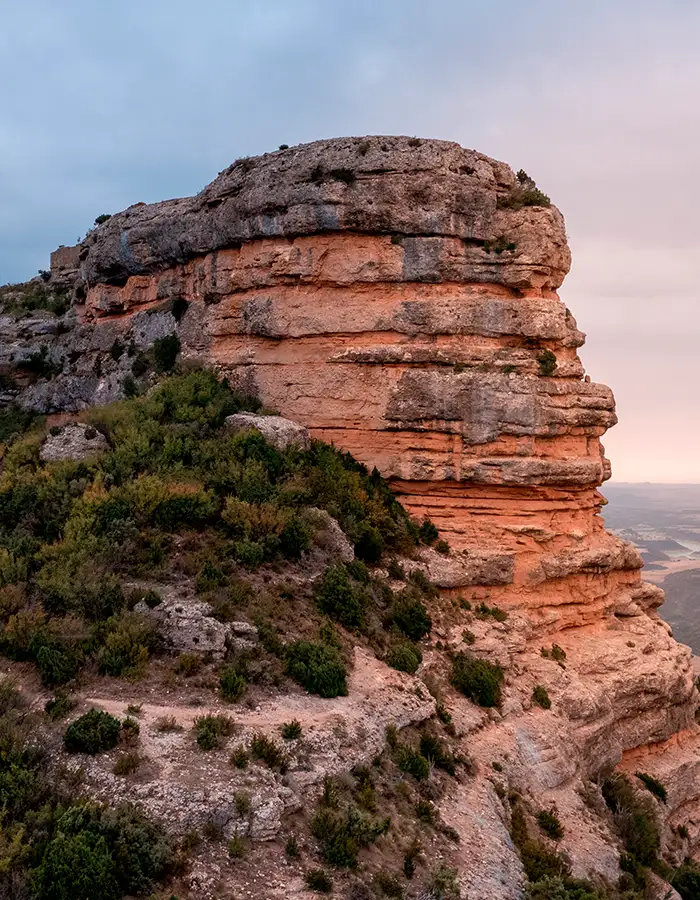The surroundings
- WHome
- 9The surroundings of a natural park

A natural park
SIERRA DE GUARA
The Sierra y Cañones de Guara Natural Park, located in the province of Huesca, encompasses various areas in the regions of Alto Gállego, Hoya de Huesca, Sobrarbe, and Somontano de Barbastro.
This park, the largest of its kind in the region, covers an area of 47,453 hectares, with an additional protection zone of 33,286 hectares. Its geographical features range from altitudes of 430 meters at the Alcanadre River to 2,077 meters at the peak of Guara.
Due to its unique geology, the park is a popular spot for activities such as canyoning and climbing. The impressive gorges of the Balcés River, stretching over 20 kilometers with drops exceeding 800 meters, stand out, as does the Grallera Alta de Guara sinkhole, with a vertical drop of 277 meters.
The Sierra y Cañones de Guara Natural Park was designated as such on December 27, 1990, by the Government of Aragón under law 14/1990. Additionally, it is recognized as a Site of Community Importance (SCI) and a Special Protection Area for Birds (SPA).
The landscape
geology and climate
The park’s climate is a blend of Atlantic and Mediterranean influences, due to its location between the Pyrenees and the Ebro Valley. This is reflected in the vegetation, which varies between the northern and southern slopes. The diverse soils and rugged terrain provide a wide range of ecological and biological resources, with plant species such as oak, pine, holm oak, and shrubs like boxwood and kermes oak. At higher altitudes, herbaceous species and endemic plants known as “rupicolous” can be found.

Visit the castle
Pre-Pyrenees
VIEWS FROM THE CASTLE
The crags
San Miguel and Amán
Regarding its origin, during the middle of the Tertiary period, rivers transported gravel and pebbles from the Pyrenees to the Ebro basin. These deposits consolidated into conglomerates and were later sculpted by the rivers, creating columnar formations known as “mallos”. This process has resulted in a distinctive and robust relief in a predominantly limestone environment, as is the case with the Sierra de Guara.

